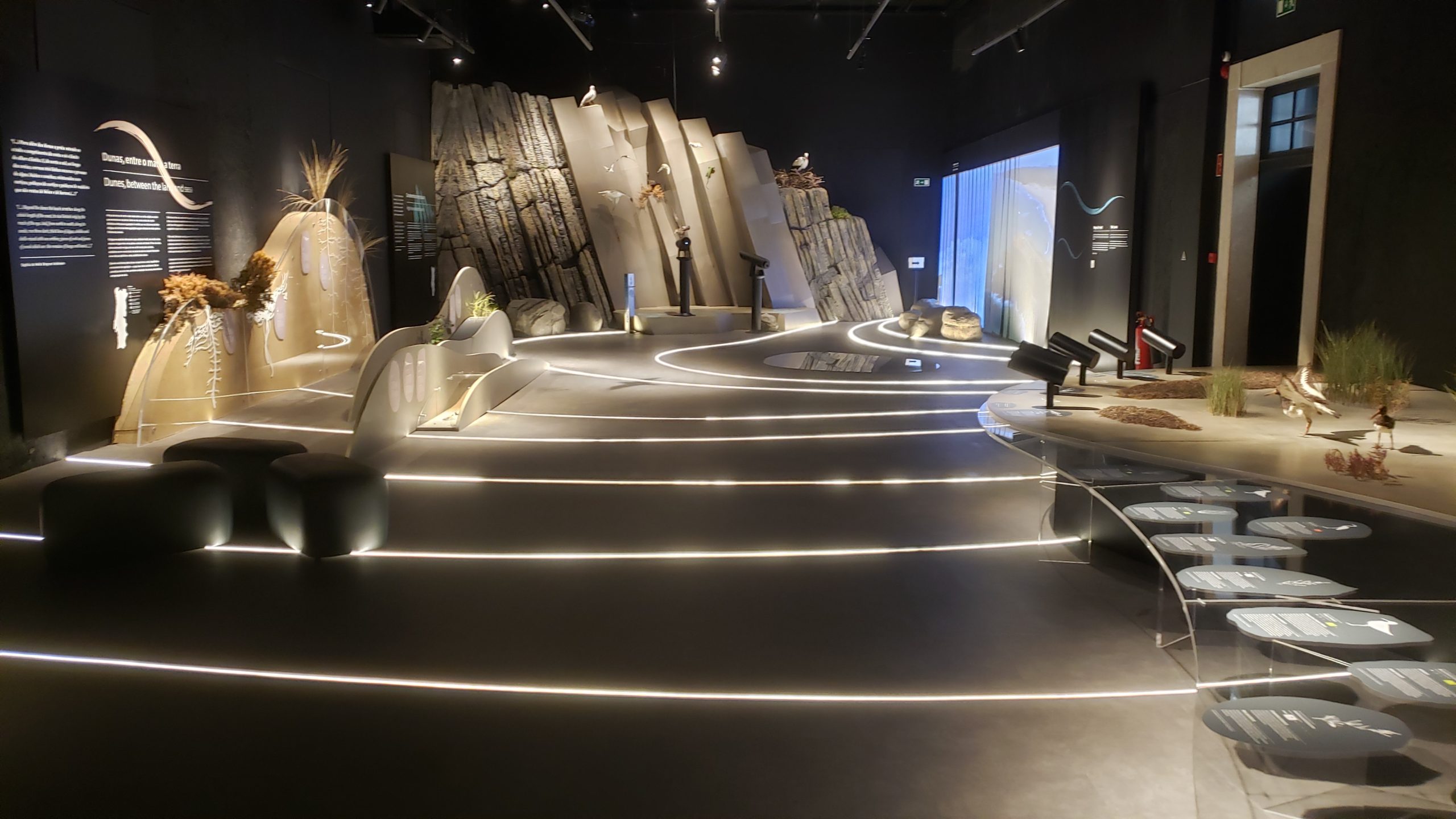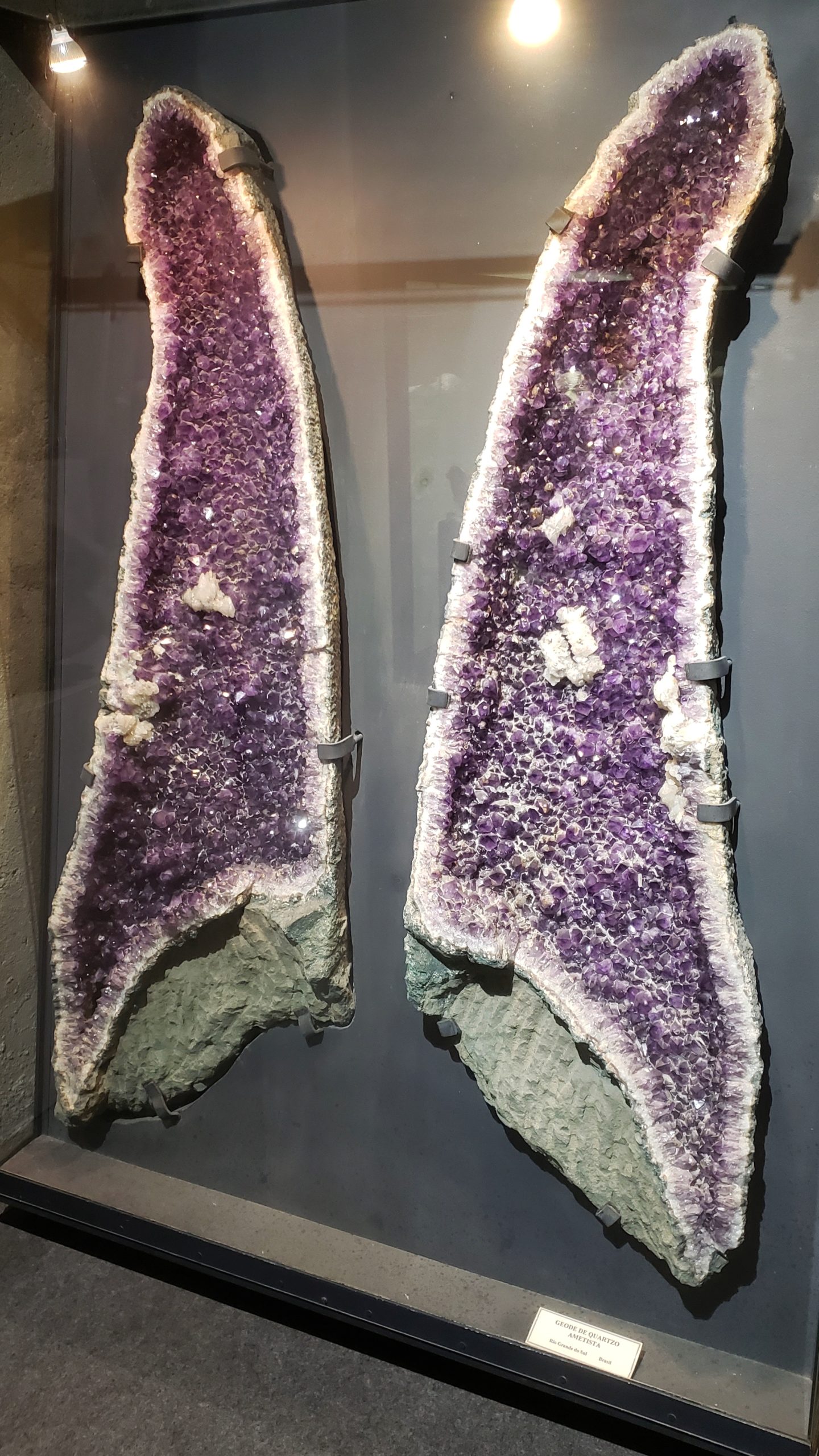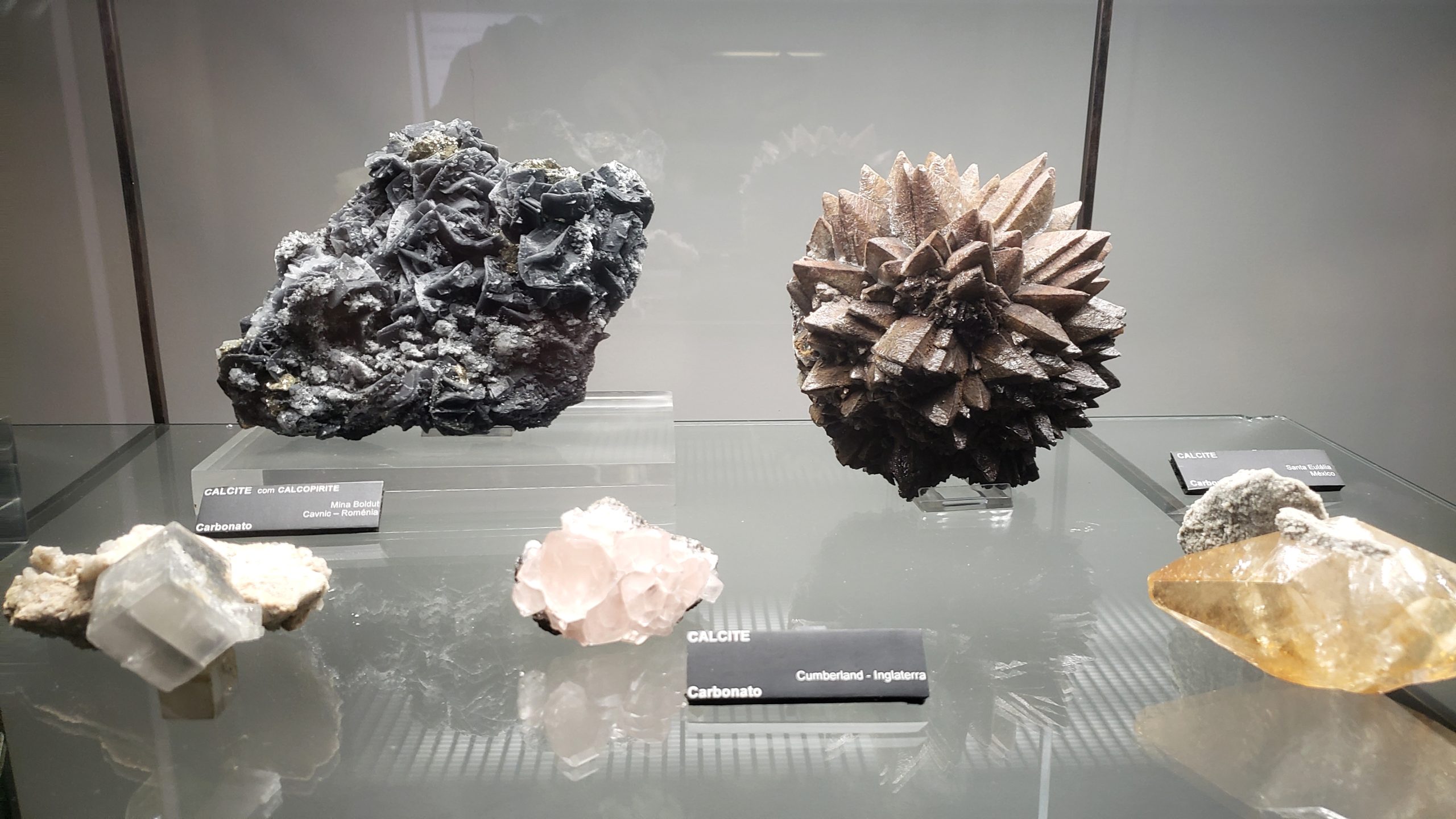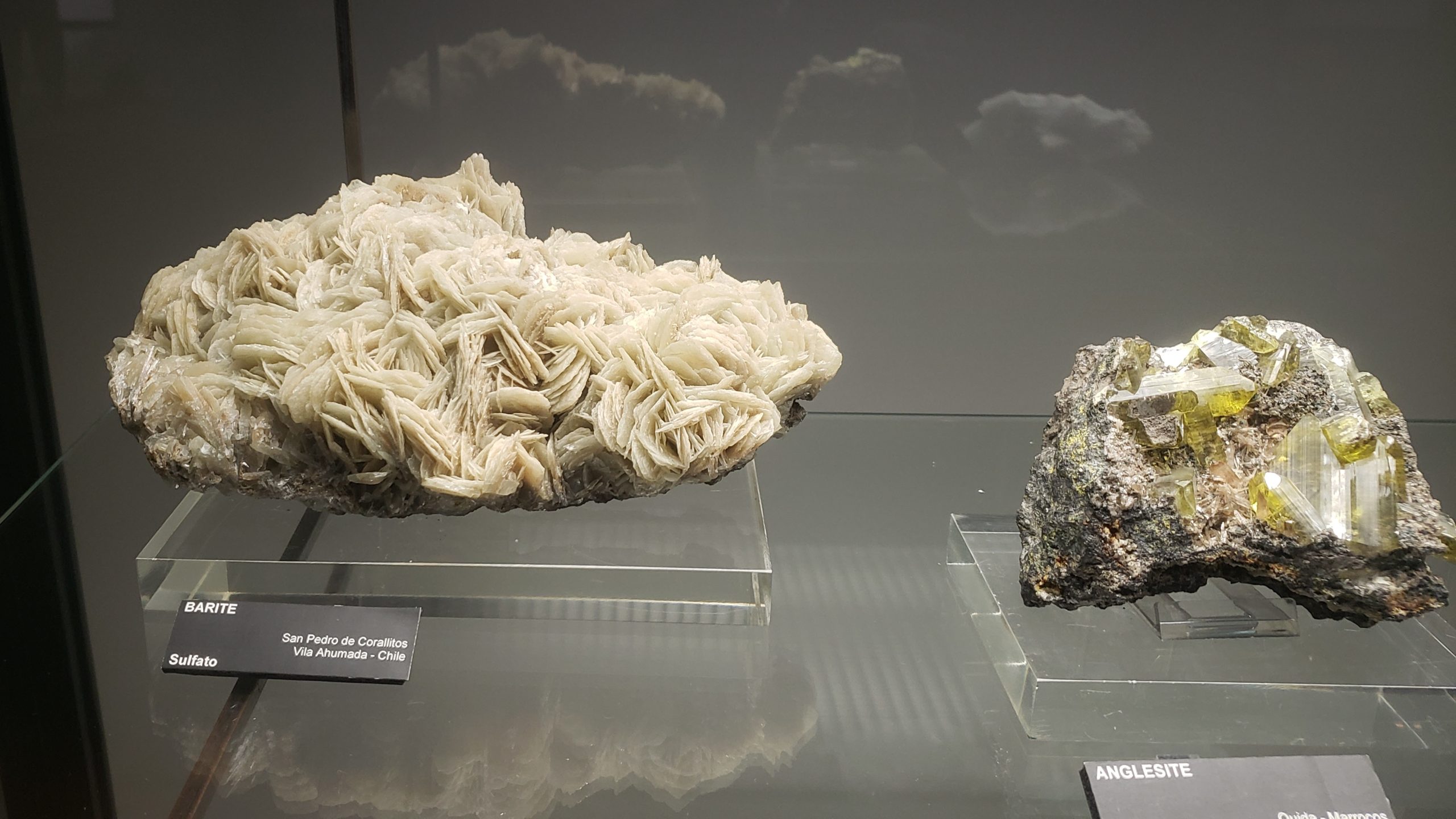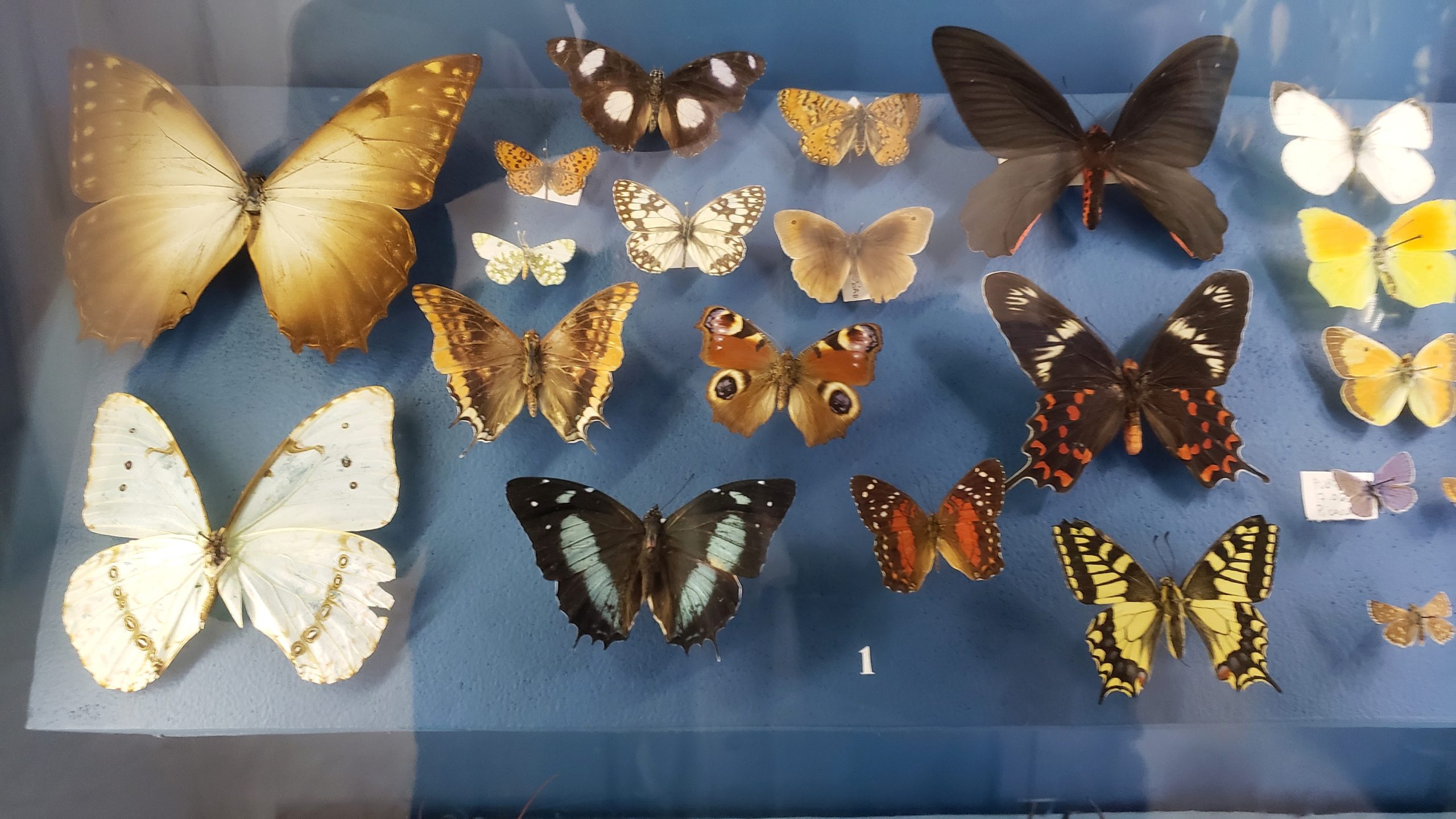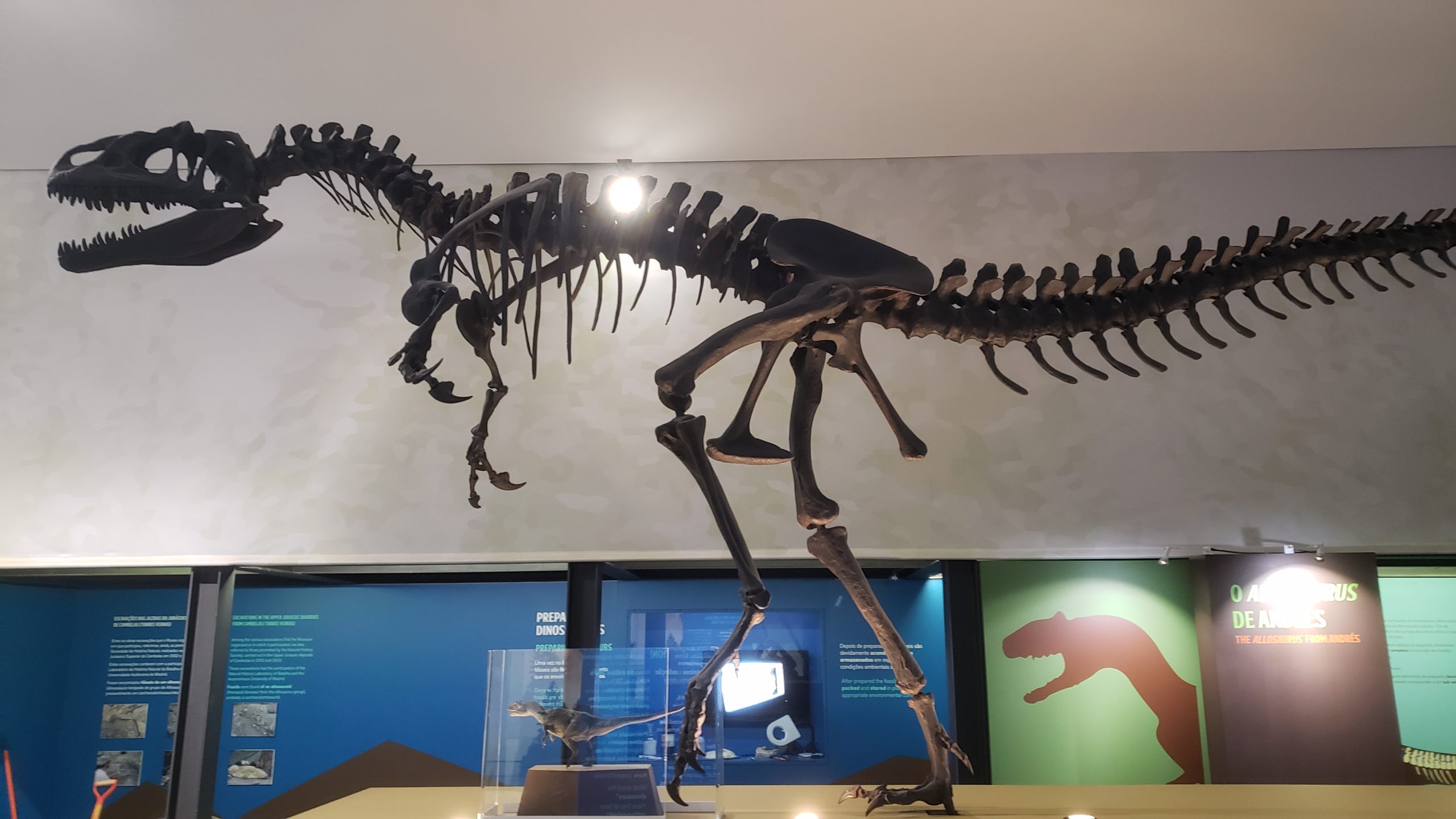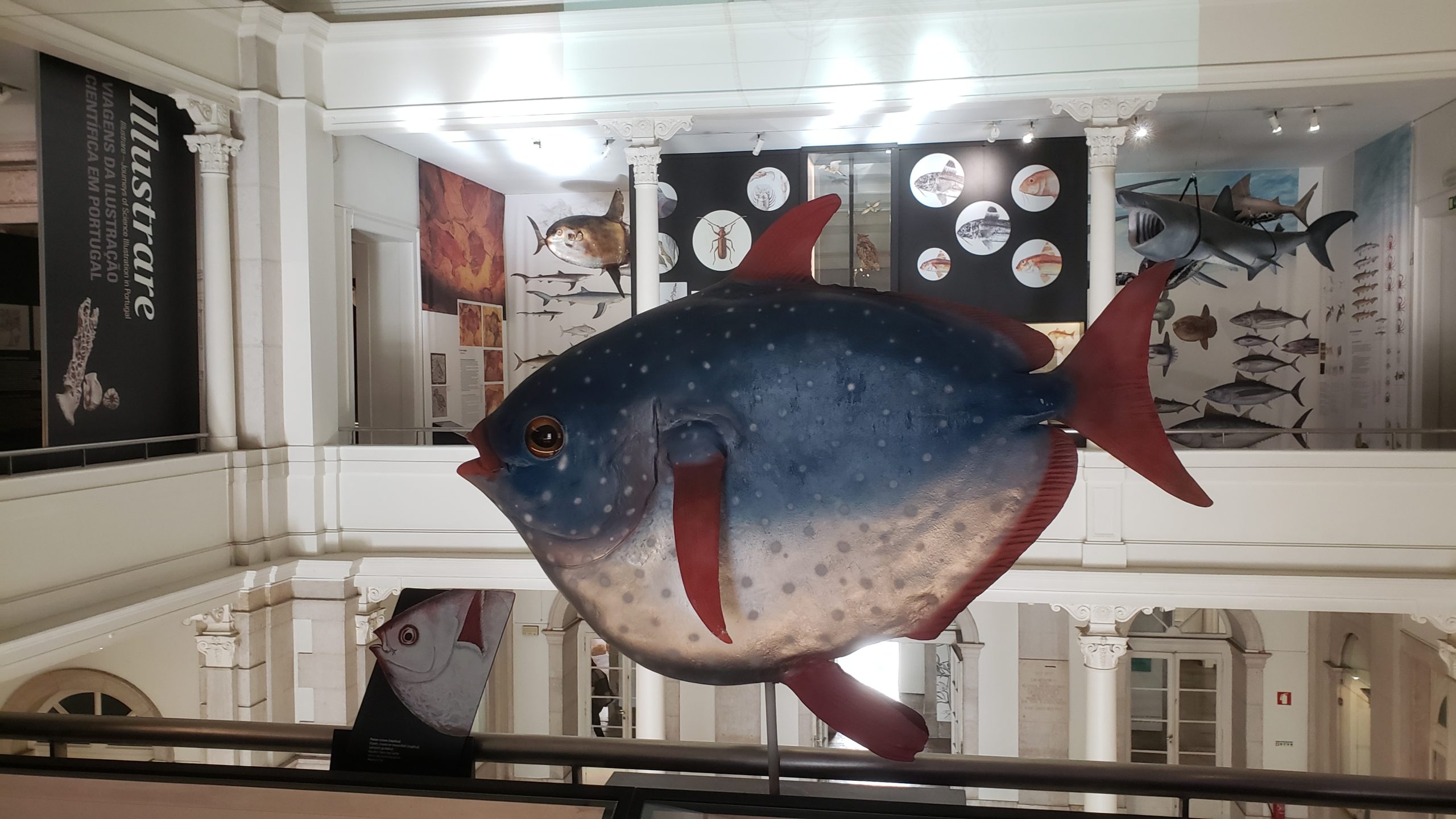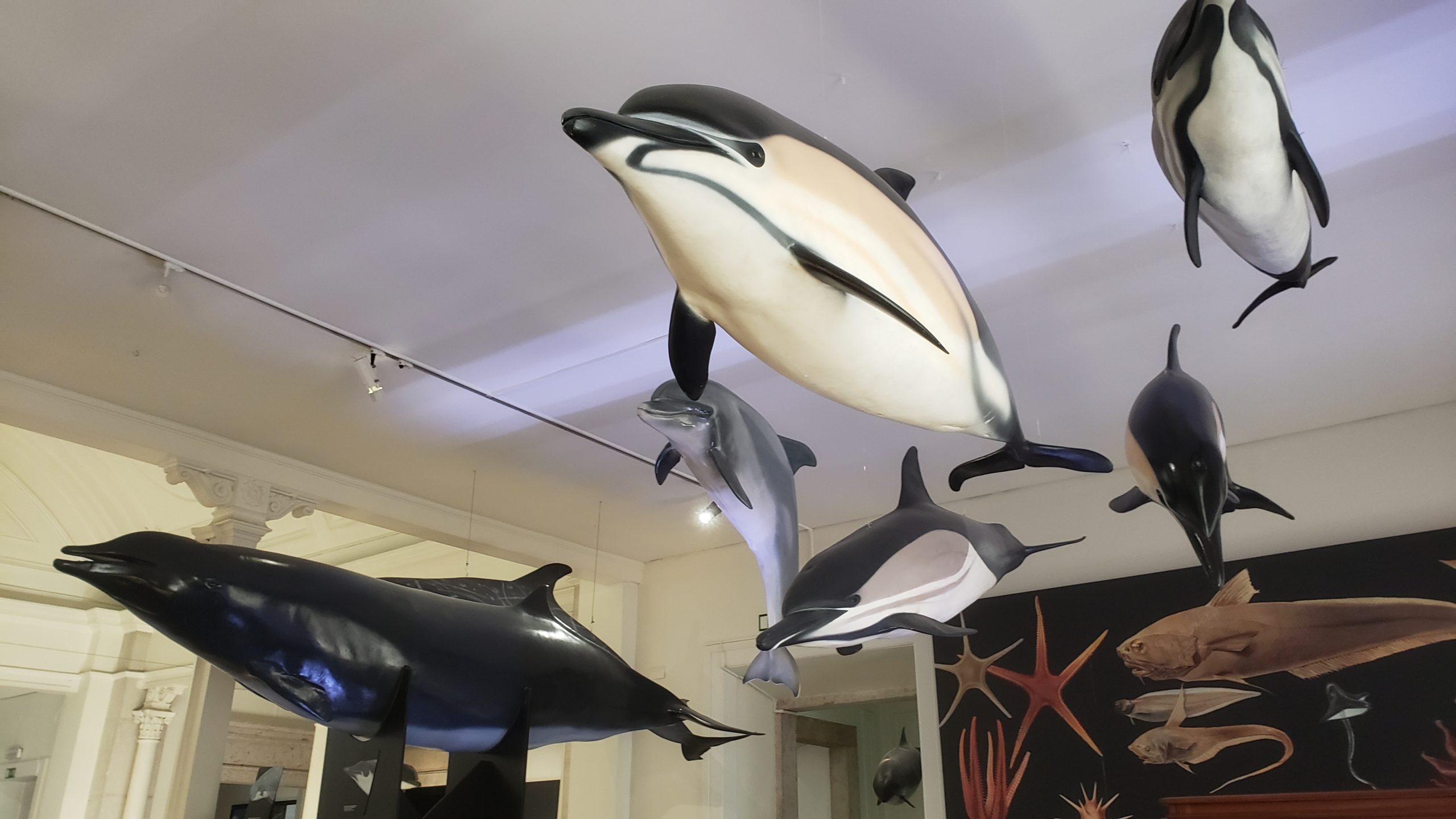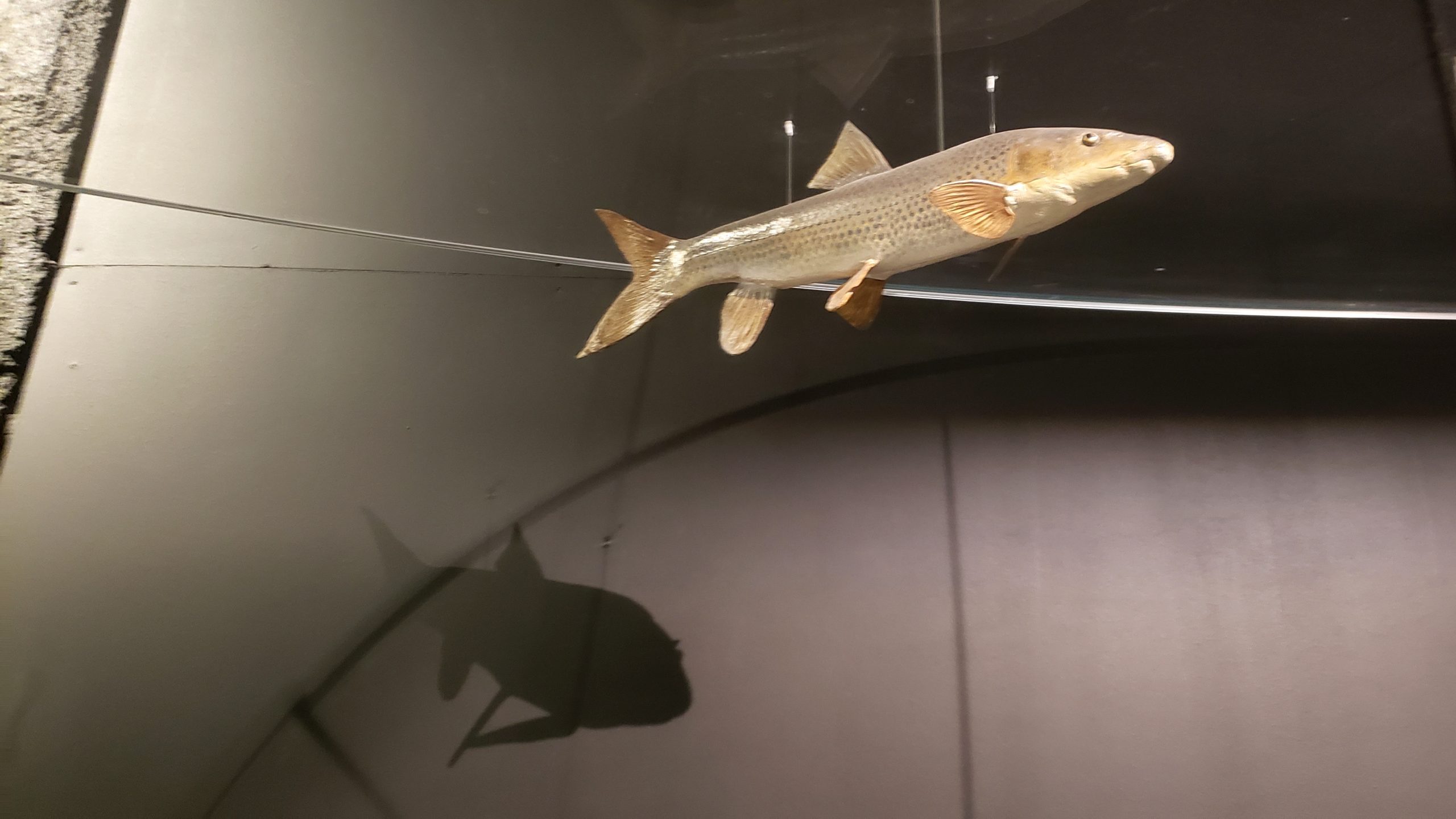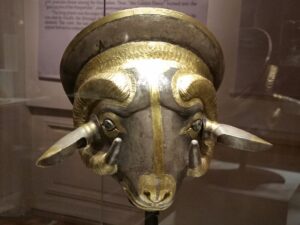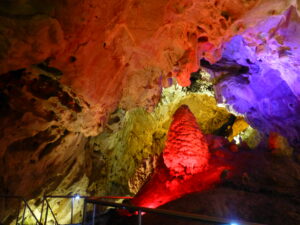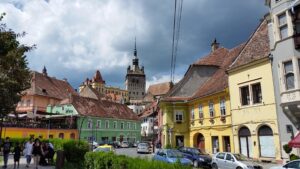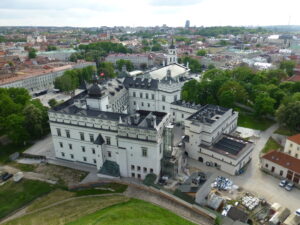In brief: We couldn’t figure out why we had skipped this engaging museum for so long, with all its old and new displays to learn from. We were glad we didn’t wait longer.
It’s not the kind of museum we tend to favor, a natural history collection, despite loving hikes and reserves and bird watching. So we had not visited the Lisbon Natural History Museum in Principe Real till now. But we thoroughly enjoyed spending several hours there – gawking at gems, deepening our understanding of the use of plants, browsing the specimen collection, and virtually wandering through the various ecologies of Portugal.
The very first room to visit in the museum is the crystal collection. The charms of each example – whether colorful, or odd shaped, or surprisingly structured – were quite evident, as in this split piece of amethyst quartz.
More geodes and crystals from the collection.
The barite/sulfate on the left assumes an impossibly tangled skein, while the anglesite on the right pokes emerald fingers at us
These colorful butterflies represented just a small part of the 50,000 specimens in the museum’s collection, including many different kinds on display in wood cabinets that seemed to come from another era.
We almost missed the dinosaur room, whose examples include a huge leg bone and a small fossil, plus the pride of the collection, this large razor-toothed Allosaurus.
This heavyweight fish floats on its own in the large room about scientific discovery and illustration, though perhaps still aware of that gaping shark looming in the background to its right.
Swimming above our heads in the same large room were dolphins and other large sea mammals.
Natural Variations: A sweep thru Portugal
The newest, most extensive and quite different exhibit at the museum is called Natural Variations. This takes the visitor on a meandering walk through various environments in Portugal – city, highland, mountain, river and forest, marshland and sea. Images and films are displayed in an abstract setting that evokes each environment, along with many examples of the fauna and flora one can find there. This is the final section, where wetlands dissolve into the sea.
In the riverine forest section of the Natural Variations tour, you suddenly find yourself virtually underwater looking up at the fish and otters and wading birds. This is an Iberian barbell, endemic to the peninsula and seemingly omnivorous, if the prey is small anyway.
The museum is an old-fashioned place in a good sense, engaging the visitor with thoughtful information and physical examples, not trying to seduce with razzle dazzle. And even on a free Sunday, it wasn’t very crowded.
And when you’re done learning about nature, you can pleasantly wander the botanic garden next to the museum – and breathe in some more.
(To enlarge any picture above, click on it. Also, for more pictures from Portugal, CLICK HERE to view the slideshow at the end of the itinerary page.)


